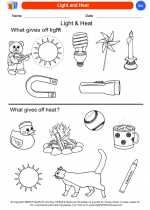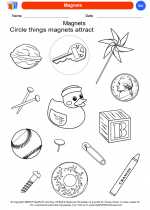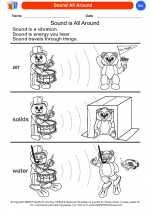Gas Giants
Gas giants are a type of planet that are primarily composed of hydrogen and helium, with smaller amounts of other elements and compounds. The four gas giants in our solar system are Jupiter, Saturn, Uranus, and Neptune. These planets are significantly larger than the terrestrial planets (Mercury, Venus, Earth, and Mars) and have very different characteristics.
Characteristics of Gas Giants
Gas giants are known for their massive size, thick atmospheres, and lack of a solid surface. They have strong gravitational forces and are often orbited by many moons and rings. The atmospheric pressure on gas giants is much higher than that of the terrestrial planets, and their atmospheres are made up of layers of gas rather than a thin atmosphere surrounding a solid surface.
Jupiter
Jupiter is the largest of the gas giants and is known for its prominent banded appearance, caused by the planet's strong winds and atmospheric dynamics. It has a large number of moons, the four largest of which are known as the Galilean moons: Io, Europa, Ganymede, and Callisto.
Saturn
Saturn is famous for its spectacular ring system, which is made up of ice particles, rock, and dust. The planet also has a diverse range of moons, with the largest being Titan, which has a thick atmosphere and hydrocarbon lakes on its surface.
Uranus
Uranus has a unique feature among the gas giants in that its axis of rotation is tilted almost parallel to its orbit around the Sun, causing it to appear to roll on its side. It has a faint ring system and a set of moons, the most notable of which is Miranda, known for its diverse and dramatic terrain.
Neptune
Neptune is the farthest planet from the Sun and is known for its bluish appearance due to the presence of methane in its atmosphere. It has a dynamic atmosphere with high-speed winds, and its largest moon, Triton, is unique in that it orbits the planet in a retrograde direction.
Study Guide
- What are gas giants primarily composed of?
- Which are the four gas giants in our solar system?
- What is the defining characteristic of gas giants in terms of their surface?
- What is the prominent feature of Saturn?
- Which gas giant has a unique axial tilt?
- What causes the bluish appearance of Neptune?
Answers
- Gas giants are primarily composed of hydrogen and helium.
- The four gas giants in our solar system are Jupiter, Saturn, Uranus, and Neptune.
- Gas giants lack a solid surface and have thick atmospheres.
- Saturn is famous for its spectacular ring system.
- Uranus has a unique axial tilt, almost parallel to its orbit around the Sun.
- The bluish appearance of Neptune is due to the presence of methane in its atmosphere.
◂Science Worksheets and Study Guides Kindergarten. Pushing, Moving, Pulling

 Coloring Worksheet
Coloring Worksheet
 Coloring Worksheet
Coloring Worksheet
 Coloring Worksheet
Coloring Worksheet
 Coloring Worksheet
Coloring Worksheet
 Coloring Worksheet
Coloring Worksheet
 Coloring Worksheet
Coloring Worksheet
 Coloring Worksheet
Coloring Worksheet
 Coloring Worksheet
Coloring Worksheet
 Coloring Worksheet
Coloring Worksheet
 Coloring Worksheet
Coloring Worksheet
 Coloring Worksheet
Coloring Worksheet
 Coloring Worksheet
Coloring Worksheet
 Coloring Worksheet
Coloring Worksheet
 Coloring Worksheet
Coloring Worksheet
 Coloring Worksheet
Coloring Worksheet
 Coloring Worksheet
Coloring Worksheet
 Coloring Worksheet
Coloring Worksheet
 Coloring Worksheet
Coloring Worksheet
 Coloring Worksheet
Coloring Worksheet
